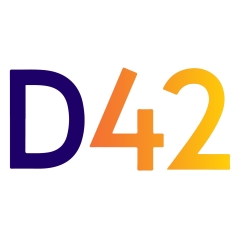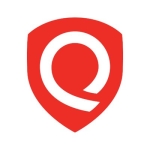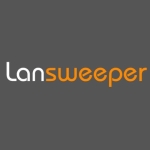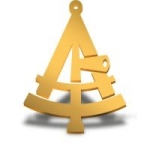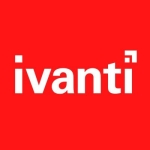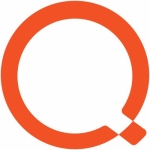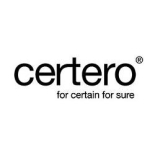What is our primary use case?
Our goal for using the product is to be able to migrate apps to the cloud successfully. E.g., you can't move something if you don't know all the dependencies or all the bits and pieces that need to go with it. If you move something and forget, "Because it talks to this database," and no one realized, then it's going to fail. You will have downtime and have to move everything back. App dependency is the biggest part for us right now. That is the immediate need.
I have been focused exclusively on bringing in data, connecting it and making sure all the servers and network devices are being scanned. I haven't spent any time trying to figure out how to get data out.
We are on the newest version of the next-gen line.
How has it helped my organization?
I know they're using Device42 to prep for moving stuff to the cloud. I'm not aware if they've used that data to move an app to the cloud yet. I think we are still learning the product and figuring how to get the data out so we can get the right reports, giving us the information we need.
I like the solution’s agentless approach to asset discovery because the IT and OS teams don't want to go install and maintain an agent on their systems. It's just more overhead when they have to do something like that and make sure there's enough space on the server. It's nice that it's agentless, as it will go out and connect, then do its thing.
It is not about the app affecting our security. Instead, it is about how the app will change to adapt to our security, which is very tight. Security was discussed from the very beginning and all the way through. However, we didn't change for the app. The way we deployed the app, it had to change to fit our security.
What is most valuable?
The most valuable feature would be the scanning stuff: the discovery. It has a lot of different hardware that it can talk to, providing a lot of good information. The way the solution’s automatic IT asset discovery and inventory functionality works is you set up a discovery job, then you can schedule it to run. I schedule all of the runs daily at different times so nothing is interfering with anything else. It's nice to know that you can set up the scan, schedule it, and sit back. You can check them every day and make sure everything ran, making sure nothing had errors, then you're good to go. Anything new is going to automatically be discovered, which is nice. It takes some of the stress off because you don't have to know, "If this team opened new servers, we need make sure now it will automatically pick them up." It is one less thing to worry about. It gathers a lot of data points.
We use the solution’s Application Dependency Mapping. It was the biggest reason that we went with Device42. I've seen some eyes open in surprise, for example, "Whoa, I didn't realize this talked to so many things." It's really eyeopening. This is the whole point of app dependencies. Sometimes, you're not able to take a step back, look at the big picture, and go, "Wow, things talk to other things a lot more than we thought they did."
What needs improvement?
Since I was focused on deploying connectors and getting all the servers to be scanned, one of the biggest pains was when a job would fail, then the output (logging) was poor. For example, "Why did it fail?" In these cases, you get a generic error. It doesn't point you in the right direction and tell you why you got the error, which is really annoying. There have been times I asked, "Is there somewhere I can see a better log as to why is this failing?" That would be a really nice improvement.
For how long have I used the solution?
I was brought onto the project five months ago.
What do I think about the stability of the solution?
For an enterprise solution, it seems pretty stable most of the time. The discovery scans just work. When they don't, it's sometimes difficult to figure out why. We have had the odd occasional issue or two, which I don't know if it was just our environment or due to instability in the app, like a remote scanner suddenly becoming corrupt to where I had to remove the scanning software from the computer and reinstall it before it would work. Twice that happened, and I had to call support. When you go in and tell a piece of software to uninstall, and it's like, "Error, couldn't complete." Okay, that tells me nothing. Then I call support who has to send me a special script that cleans things up in the background. Finally, it will let me do things in the normal way that you're supposed to do them. This is something that they have some things to work on.
What do I think about the scalability of the solution?
It is scalable, though it all depends on the size of the database. If that grows, you have more room to read in more devices.
We are looking at some long-term goals of other teams using it. We are looking at having the network team map out everything, then letting them have access to go in and look at all their inventory. However, for now, we have started the push to the cloud, which is about mapping all the dependencies into the topology of the network, such as what talks to what ports so nothing gets left behind, firewalls, dependencies, etc. This is all flushed out ahead of time.
Device42 is currently hitting about half of our environment/LOBs, which is approximately 4000 servers. From what I've heard, there are plans to extend it to the rest.
There are two to three system admins who I have handed the project over to for day-to-day operations. The project that I was on, which was on hold, has picked back up, so I'm on it full-time. Therefore, I have been training other people to take over Device42. Right now, I'm in more of a training role than an active user of it.
How are customer service and technical support?
The two times that I had to contact the technical support when the machine went corrupt, they were helpful. They sent me a script with a nice email telling me how to use it. I got on the phone with them just to make sure everything was going correctly. We have no issues with them.
Which solution did I use previously and why did I switch?
Previously, it was just a black hole. People guessing they knew what talked to what. There was no centralized tool for bringing it altogether.
We primarily chose to go with Device42 because we needed to know our application dependencies before moving to the cloud. We didn't want to rely on individual teams, like the network team, to say, "We have this diagram, app, or program that we use." We needed somewhere where we could see it. We also needed all the different parts to come together to see what's going on.
How was the initial setup?
I took over the solution because a project that I was working on was put on hold. They handed this solution to me after the initial setup was done, and I ran with it from there.
The deployment is easy. I did it myself. You don't need a lot for this application. I handed it off to two or three people because they also are doing other things. This way, they can share the load. Once you get everything set up, it just runs. It is not like it needs a whole lot of constant handholding.
For deployment, you need to roll out the servers, install the software on them, and get the firewalls opened up. Each company will be different on how long stuff like this takes. You could have something up and scanning servers in a couple of weeks.
The deployment strategy that we used was hitting environments that needed to be moved to the cloud first. Once that is done, then they will to start expanding into other areas.
What about the implementation team?
Be careful who you partner with. We partnered with a third-party to come in and help us set everything up. The first technician that they gave us did not know what he was doing. Every time I would ask about something, he would say, "Oh, this looks different. They changed that from an older version." He didn't seem to know the current version. He was stuck in the past. Finally, we got a different guy who knew what he was talking about. So, it stunted our growth in the beginning.
The second guy comes along, and he's like, "App dependency wasn't even checked in the scans," because we weren't told to. We didn't know that we needed that checked to get what we needed until we talked to the new guy. We were like, "This has been useless so far," because this one checkbox alone is essential to what we want to get out of it. He had several suggestions on tweaks to the scans, etc.
If you're going to partner with a company to come in who are supposedly experts to help you set up and configure it, pay close attention because there are a lot of things about the app to learn. You need to know exactly what you want out of the app so they can help you figure out how to get it.
What was our ROI?
It has not had an impact on our managing of assets yet, as we are still in the learning phase.
Which other solutions did I evaluate?
I believe that they evaluated one or two other options.
What other advice do I have?
The environment is a lot more complicated than I thought. It is like, "Wow, there are so many more servers, devices, and things talking to things." I have been in corporate enterprise environments for many years now, and this is the point of the app. I never really stopped to look at the big picture: "Wow, the environment is really complex." It's an eye-opener and makes you think about things differently. E.g., when you make a change to one thing, it helps you understand all the different things that could or could not be impacted. If you think small, then, "I will make this change to this one server." But, if you step back, you realize, "That's part of this, which is part of that. These things are all connected." It's like the butterfly effect: One thing will affect another, and another, and another.
There is an enterprise architect who is focused on getting information out of Device42:
- The right reports
- All the app dependencies
- The data that we need to help us get stuff to the cloud.
We are not using the solution’s CMDB, ITAM, and DCIM features.
If you know what to put into the app to get out what you need, then it can do it. I would give it an eight (out of 10).
Which deployment model are you using for this solution?
On-premises
Disclosure: PeerSpot contacted the reviewer to collect the review and to validate authenticity. The reviewer was referred by the vendor, but the review is not subject to editing or approval by the vendor.

